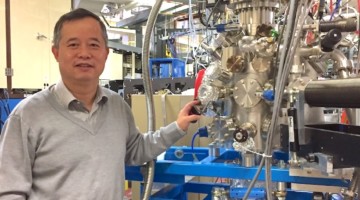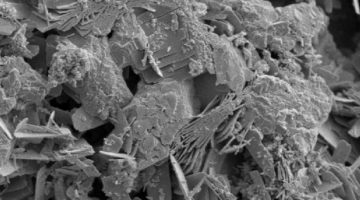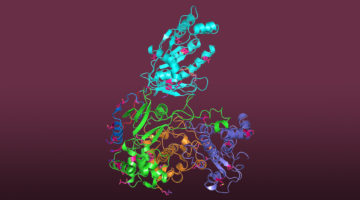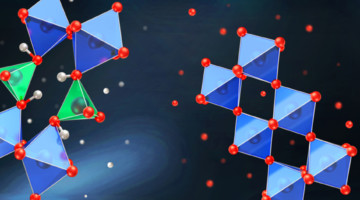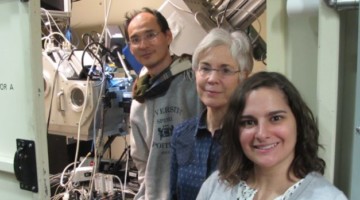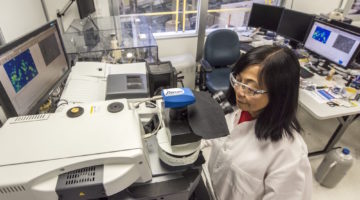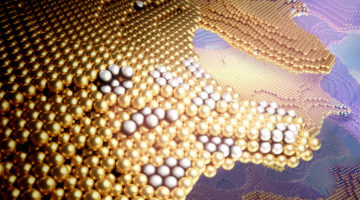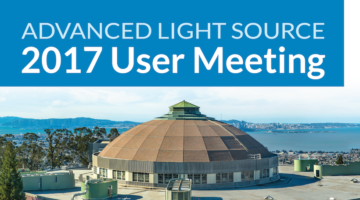“After more than 10 years as ALS Director, I will be stepping down later this year to return to teaching and research on campus. Berkeley Lab will soon begin the process of searching for a new ALS Director, and my plan is to be here until new leadership is identified.” Read more »
All News & Updates
Jinghua Guo, Senior Scientist
Jinghua Guo has been a part of the ALS since the early days. His original research focus is still one of his top interests now—studies of in situ capabilities of catalysts in gases and liquids and chemical processes. Guo also studies nanostructured materials, energy materials, and water and environmental sciences at Beamline 8.0.1 and also at 6.3.1.2. Read more »
The Ancient Roman Secret to Concrete Resilience in Seawater
Researchers used x-ray microdiffraction to trace the complex sequences of crystal growth in concrete from ancient Roman pier and breakwater sites. The results indicate that minerals continue to form over millennia as seawater percolates through, reinforcing the cementing matrix in a kind of regenerative process. Read more »
Structure of a Key Protein from the Zika Virus
The Zika virus (ZIKV) is a mosquito-borne pathogen recently linked to birth defects in infants. At the ALS, researchers have resolved the structure of a key ZIKV protein to 3.0 Å, an important step toward the rational design of drugs capable of disrupting viral functions and halting the spread of the disease. Read more »![]()
![]()
A Multifunctional Material with Electric-Field Control
Three distinct crystalline phases with different electronic, magnetic, and optical properties were reversibly induced in a material through the insertion and extraction of ions by an electric field at room temperature. Such multifunctional materials are desirable for many applications, from smart windows to spintronics. Read more »![]()
![]()
New Studies of Ancient Concrete Could Teach Us to Do as the Romans Did
A new look inside 2,000-year-old concrete—made from volcanic ash, lime (the product of baked limestone), and seawater—has provided new clues to the evolving chemistry and mineral cements that allow ancient harbor structures to withstand the test of time. Read more »
Researchers ID New Mechanism for Keeping DNA Protein in Line
The actions of a protein used for DNA replication and repair are guided by electrostatic forces known as phosphate steering, a finding that not only reveals key details about a vital process in healthy cells, but provides new directions for cancer treatment research. Read more »
What’s On Your Skin? Archaea, That’s What
It turns out your skin is crawling with single-celled microorganisms—and they’re not just bacteria. A study by Berkeley Lab and the Medical University of Graz has found that the skin microbiome also contains archaea, a type of extreme-loving microbe, and that the amount of it varies with age. Read more »
A Closer Look at Dynamic Restructuring in Catalysts
Researchers have structurally and chemically “visualized” the surface of a silver–gold alloy as it reorganizes itself during catalytic activation. The insights gained from this methodology can lead to improved catalysts for energy-intensive industrial applications, thereby increasing efficiency and reducing waste. Read more »![]()
![]()
Reminder: Submit Nominations for the 2017 ALS User Meeting Awards
Nominations for the 2017 ALS User Meeting awards are due on July 14. Consider putting forward an individual (or team) who has made a significant contribution to the scientific and/or user support programs at the ALS. The online nomination forms are now on the UEC website together with a description of each award. Read more »
- « Previous Page
- 1
- …
- 105
- 106
- 107
- 108
- 109
- …
- 139
- Next Page »

